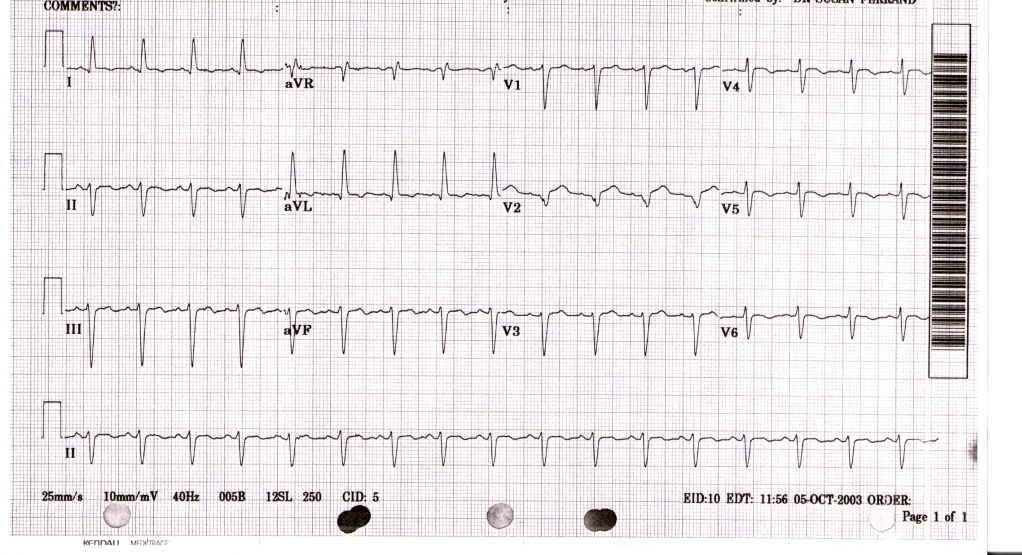Stress cardiomyopathy electrocardiogram: Difference between revisions
Jump to navigation
Jump to search
Dima Nimri (talk | contribs) |
Dima Nimri (talk | contribs) |
||
| Line 9: | Line 9: | ||
*[[T wave inversion]] | *[[T wave inversion]] | ||
*[[Q wave]] formation | *[[Q wave]] formation | ||
*QT prolongation | *[[QT prolongation]] | ||
*Rarely, malignant ventricular arrhythmias may be seen | *Rarely, malignant [[ventricular arrhythmias]] may be seen | ||
Revision as of 23:21, 6 January 2017
|
Stress cardiomyopathy Microchapters |
|
Diagnosis |
|---|
|
Treatment |
|
Unstable angina/non ST elevation myocardial infarction in Stress (Takotsubo) Cardiomyopathy |
|
Case Studies |
|
Stress cardiomyopathy electrocardiogram On the Web |
|
American Roentgen Ray Society Images of Stress cardiomyopathy electrocardiogram |
|
Risk calculators and risk factors for Stress cardiomyopathy electrocardiogram |
Editor-In-Chief: C. Michael Gibson, M.S., M.D. [1]
Overview
Electrocardiogram
The ECG findings are often confused with those of an acute anterior wall myocardial infarction.[1][2] Findings on ECG include:[2][3]
- ST elevation in the precordial leads
- T wave inversion
- Q wave formation
- QT prolongation
- Rarely, malignant ventricular arrhythmias may be seen

References
- ↑ Bybee KA, Motiei A, Syed IS, Kara T, Prasad A, Lennon RJ, Murphy JG, Hammill SC, Rihal CS, Wright RS (2006). "Electrocardiography cannot reliably differentiate transient left ventricular apical ballooning syndrome from anterior ST-segment elevation myocardial infarction". J Electrocardiol. PMID 17067626.
- ↑ 2.0 2.1 Akashi YJ, Goldstein DS, Barbaro G, Ueyama T (2008). "Takotsubo cardiomyopathy: a new form of acute, reversible heart failure". Circulation. 118 (25): 2754–62. doi:10.1161/CIRCULATIONAHA.108.767012. PMC 4893309. PMID 19106400.
- ↑ Brenner ZR, Powers J (2008). "Takotsubo cardiomyopathy". Heart Lung. 37 (1): 1–7. doi:10.1016/j.hrtlng.2006.12.003. PMID 18206521.